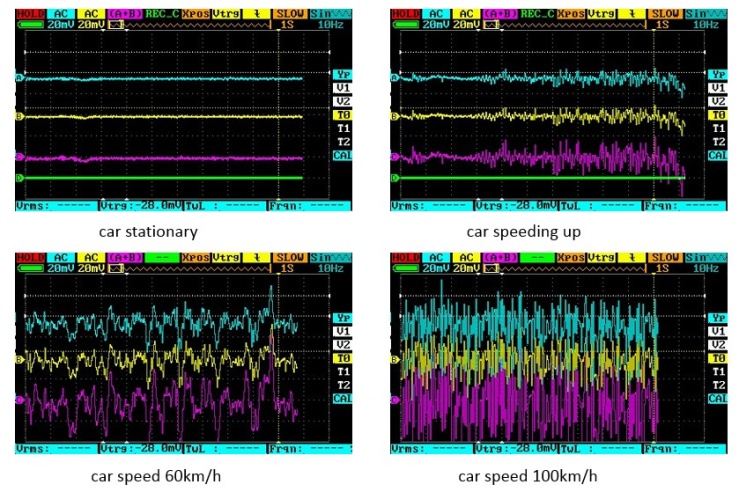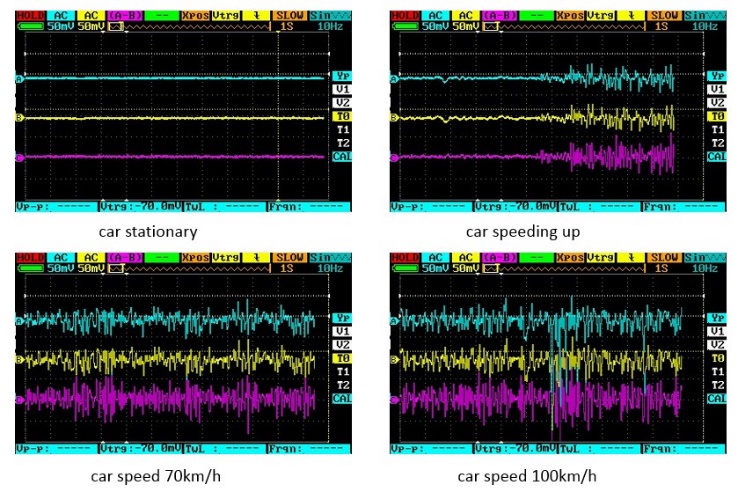-
Paper Information
- Paper Submission
-
Journal Information
- About This Journal
- Editorial Board
- Current Issue
- Archive
- Author Guidelines
- Contact Us
International Journal of Electromagnetics and Applications
p-ISSN: 2168-5037 e-ISSN: 2168-5045
2023; 12(1): 1-4
doi:10.5923/j.ijea.20231201.01
Received: Mar. 7, 2023; Accepted: Mar. 22, 2023; Published: Apr. 15, 2023

Is It Possible to Harvest Energy through Earth’s Magnetic Field Induction?
Irena Cosic1, Atomir Kamber2, Drasko Cosic1
1R&I, AMALNA Consulting, Black Rock, Australia
2R&D, Kamber Antennas, Cheltenham, Australia
Correspondence to: Irena Cosic, R&I, AMALNA Consulting, Black Rock, Australia.
| Email: |  |
Copyright © 2023 The Author(s). Published by Scientific & Academic Publishing.
This work is licensed under the Creative Commons Attribution International License (CC BY).
http://creativecommons.org/licenses/by/4.0/

A lot of research has been done regarding different influence and usage of Earth’s magnetic field. The most controversial idea is to harvest energy from Earth’s magnetic field, possibly through induction in conductive materials, while moving through Earth’s magnetic field. Although, this idea does not look plausible, as more energy will be used for the movement, than it will be produced by this induction, we are interested here to investigate usage of such induction in cases when movement already exists. Here, we have firstly measured this induction using conductive wires mounted on the moving car. To ensure that the induction is coming from Earth’s magnetic field only, those measurements have been done in the remote area of Australia, where there is no other electromagnetic field present except Earth’s magnetic field. With our experiments we have obtained measurable induced voltage proportional to number of wires and speed of car. Having in mind, that induced energy would require more power than it generates, within some applications it is possible to produce extra energy by offsetting existing energy loses. For example, we have investigated here possibility to use such induction for diminishing loses and topping up battery charge of hybrid and electric cars, while car is moving with the aim to extend car’s driving range.
Keywords: Electromagnetic induction, Earth’s magnetic field, Hybrid and/or electric car
Cite this paper: Irena Cosic, Atomir Kamber, Drasko Cosic, Is It Possible to Harvest Energy through Earth’s Magnetic Field Induction?, International Journal of Electromagnetics and Applications, Vol. 12 No. 1, 2023, pp. 1-4. doi: 10.5923/j.ijea.20231201.01.
Article Outline
1. Introduction
- Earth’s magnetic field is the magnetic field that extends from Earth’s interior out into space, where it interacts with solar wind, a stream of charged particles emanating from the Sun [1]. The magnitude of Earth’s magnetic field at its surface ranges from 0.000025T to 0.000065T [2]. Earth’s magnetic field deflects most of the solar wind, whose charged particles would otherwise strip away the ozone layer that protects the Earth from harmful ultraviolet radiation [3]. For many years there has been done lot of research regarding different influence and usage of Earth’s magnetic field. For example, it has been number of investigations, including our own [4,5], regarding influence of Earth’s magnetic field to human health. In addition, extensive research has been done by Nikola Tesla in early 1900’s to transfer different electric signals over Earth’s magnetic field [6]. The most controversial research is the idea to harvest energy from Earth’s magnetic field, possibly through voltage/current induction in conductive material, while moving through Earth’s magnetic field. Although, this idea does not look plausible as more energy will be used for movement than it will be produced by this induction, we are interested here to investigate usage of such induction in cases when movement already exists.
2. Theory and Calculations
- Faraday’s law of electromagnetic induction is that it is possible to induce voltage/current in a conductive material, for example wire, by changing the magnetic flux going through it. It can be achieved by placing the wire in a variable magnetic field or by moving either the magnet or the wire in the magnetic field such that the amount of flux flowing through is changing [7]. Thus, to produce voltage/current induction due to Earth’s magnetic field, it is necessary to have conductive wire moving through this magnetic field. Although, more energy will be used for movement than it will be produced by this induction, we are here firstly interested to measure this induction and then to investigate possible usage of such induction in cases when movement already exists.The aim of this research is to investigate Earth’s magnetic field induction within the moving wires and to experimentally test the related calculations. To calculate how much induction can be achieved with wires cutting Earth’s magnetic field, while the wires are moving, we have calculated the following best-case scenario as shown below:• The maximum strength of Earth’s magnetic field is between 0.000025T and 0.000065T [2], but for best-case scenario calculation, we will consider the maximum value of 0.000065T. • If supposed speed of moving wires is 100km/h, which is 27.8m/s, then induced electromagnetic potential in one-meter-long wire due to Earth's magnetic field, will be: Emf=0.000065Tx1mx27.8m/s=0.0018V.• As our tests have been performed with 40 and 80 wires, 110cm long, the calculated respective induced Emf would be:Emf(40)=0.000065Tx1.1mx27.8m/sx40=0.08V.Emf(80)=0.000065Tx1.1mx27.8m/sx80=0.16V.These calculations are for the ideal case, which would produce the maximum voltage induction and no losses in contacts, rectifiers, etc. were accounted for.
3. Experiments and Results
- With previous calculations in mind, we have designed preliminary experiments to test the following hypotheses:1. Electromagnetic field is induced in wires when they are cutting lines of Earth’s magnetic field.2. Amplitude of this induced electromagnetic field is proportional to the speed of moving wires. 3. This induced electromagnetic field is proportional to the number of wires used.To test these hypotheses, we have designed two different experimental devices with 110cm long wires, one with 40 wires and another with 80 wires, which have been mounted on the roof of the car and measurements have been done at different speeds. To make sure that the induction is obtained only from Earth’s magnetic field, these experiments have been done in the remote area of Australia without any electricity, no mobile phone coverage, and no other electromagnetic field present except Earth’s magnetic field.The initial measurements with 40 wires, 110cm long, mounted on the roof of the car are presented in Figure 1 for different speeds of car. The induction voltage has been measured by standard oscilloscope DS213 with voltage range of 20mV per square on the oscilloscope screen.
4. Possible Application
- Following our measurements above, we discuss here one possible application of voltage induction due to Earth’s magnetic field. Due to huge need to reduce pollution and greenhouse gas emission, decarbonisation of transportation is a critical component. Thus, hybrid and electric vehicles are more popular, but there are still certain problems with electrification of vehicle fleets [8,9]. Successful transition to electrical vehicles will need to be supported by comprehensive vehicle charging infrastructure. In addition, even if the charging infrastructure is sufficient, the biggest problems with current battery charging systems are limited driving range of electrical vehicles, takes a long time for recharging batteries and charging is only possible when the vehicle is stationary, while connected to a power outlet. This is particular problem for countries like Australia, with huge unpopulated, remote areas where charging infrastructure is scares. In such places it would be beneficial to have a system, which can even slightly prolong battery charge and diminish battery loses. Here, we investigate the possibility to top-up battery charge and diminish battery loses, while the vehicle is moving, based on the fact that electric voltage is induced in conductive wire, when wire is cutting through the lines of magnetic field.Although this idea of harvesting energy through Earth’s magnetic field does not look plausible, as more energy will be used for movement than it will be produced by this induction, we are interested here to propose usage of such induction in cases when movement already exists. Here, we are considering the case with either hybrid or electric car, which are normally using energy from combustion motor and/or battery. In current situation, there is always induction of circular currents, so called eddy currents, in the conductive roof of the moving car. This induction, which is completely useless, is producing electric field causing drag force for the car movement. If parallel wires are implanted in the roof of the car, they will brake useless eddy currents and they will by themselves produce similar drag, but this voltage/current induction could be used to top up the battery charge. This idea could be combined with battery charging through regenerative breaking, similar as already used in hybrid electric vehicles. Thus, we propose here the innovative idea to prolong the use of hybrid or electric car battery, even slightly, by toping up its charge through induction, while diminishing eddy currents drag, with the aim to extend the hybrid or electric car’s driving range.
5. Conclusions
- Here, we have presented our measurements of electromagnetic induction in conductive wires, while moving within Earth’s magnetic field. For that purpose, we have designed devices with 40 and 80 wires respectively, which have been mounted on the roof of the car and the measurements have been done for different speeds of the car. Such setting enabled us to test if this induction depends on the number of wires and speed of the car. The measurements have been done in remote area of Australia, where there is no other electromagnetic field, to ensure that induction is only due to Earth’s magnetic field. The results are in accordance with preliminary calculations, also presented in this paper.With results presented here we have proved our initial hypotheses:1. Electromagnetic field is indeed induced in conductive wires when they are cutting lines of Earth’s magnetic field.2. Amplitude of this induced electromagnetic field is proportional to the speed of the car.3. This electromagnetic field is proportional to the number of wires used.In addition, we have discussed here the innovative idea to prolong the use of hybrid or electric car battery, even slightly, by toping up its charge through induction, while diminishing eddy currents drag, with the aim to extend the hybrid or electric car’s driving range.
ACKNOWLEDGEMENTS
- The authors would like to thank Miss Amy Cosic for proofreading this manuscript.
 Abstract
Abstract Reference
Reference Full-Text PDF
Full-Text PDF Full-text HTML
Full-text HTML
